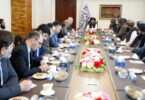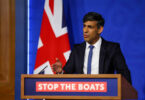Anthony Ruggiero
Before departing Ir-an on Sunday, Int-ernational Atomic Energy Agency (IAEA) Director General Rafael Grossi issued a joint statement with his hosts, announcing they had reached an agreement on Tehran’s nuclear safeguards implementation, but would not disclose all of its provisions. Based on the limited information available, it seems the Iran-IAEA deal may set a dangerous precedent by weakening safeguards and will have long-term consequences for the IAEA’s ability to monitor nuclear developments in Iran and other countries.
Iran spurred Grossi’s visit by threatening to suspend implementation of the Additional Protocol (AP) – an agreement that allows short-notice inspections at undeclared facilities – on February 23. Grossi arrived on February 21 to broker a solution and returned with a compromise that he described as providing the IAEA “less access.” He said the deal still allows “snap inspections,” but they are not the same as those allowed under the AP.
Unfortunately, the details of this compromise are still hidden in a secret technical annex. According to the Iranian government, the deal allows IAEA cameras to continue monitoring activities at Iranian facilities, but the IAEA will not have access to the data for three months. Even then, access will depend on whether Iran receives sanctions relief from the United States. If not, then the data will be deleted.
Last year, Iran manufactured another safeguards crisis when it rejected a January 2020 IAEA request to investigate two locations where Iran is suspected of having used or stored nuclear material but did not declare those activities to the IAEA as required. In that instance, Tehran met with a firmer response from both the United States and its European allies.
The E3 (France, Germany, and the United Kingdom) noted that Iran’s actions risked “seriously undermining the global safeguards system if no progress is made.” The E3 also sponsored an IAEA resolution that was adopted in June 2020, reaffirming that Iran should “cooperate fully and in a timely manner with the IAEA.”
While Iran denied access to the sites in question for nearly seven months, Grossi brokered a deal in August 2020 to secure access. In a new report released to IAEA member states yesterday, Grossi states the IAEA found the presence of altered (non-natural) uranium particles at the sites in question, indicating a major violation of Iran’s safeguards agreement. So far, Iran has not responded to a January 14 IAEA letter requesting clarification of its findings.
The IAEA’s willingness to let Iran choose its safeguards implementation could be a problem over the long term. North Korea could use Iran’s playbook to delay and disrupt safeguards implementation if the IAEA returns to North Korea to implement an interim or final deal on denuclearization. Saudi Arabia is also watching for lessons on how to weaken IAEA safeguards as Riyadh expands its own nuclear program. The first step to rectifying this situation is for the IAEA to release immediately the technical annex containing the details of its deal with Tehran. This would allow an open discussion of the deal’s implications, while preventing Iran from selectively releasing details to serve its own interests.
The Biden administration, in concert with the E3, should use next week’s IAEA Board of Governors meeting to condemn Iran’s attempt to extort sanctions relief and reduce its safeguards implementation. The United States should also lead the effort to derestrict (that is, publish) the technical annex if Grossi does not release it.
The IAEA-Iran standoff and the Biden administration’s response are an early window into how the United States will handle negotiations with Iran, and an unfortunate signal to others, such as North Korea, Russia, and China. If Biden folds on Iran’s safeguards obligations, Tehran will know it can demand even greater incentives to return to the negotiating table for discussions on the 2015 nuclear deal.
Anthony Ruggiero is a senior fellow at the Foundation for Defense of Democracies (FDD), where he also contributes to FDD’s Iran Program and Center on Military and Political Power (CMPP). Follow Anthony on Twitter @NatSecAnthony.






